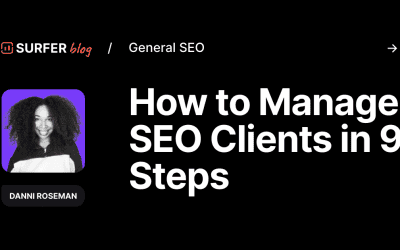When it comes to optimizing websites for search engines, there is no one-size-fits-all strategy. Different websites require different approaches, from keyword research and on-page optimization to link building and content creation.
By understanding your target audience and their search intent, you can tailor your optimization efforts to effectively drive organic traffic and improve search engine rankings. In this article, we will explore some specific strategies that you can use to optimize your website and boost its visibility in search engine results.
So, grab a cup of coffee and let’s dive into the world of SEO!
Learn more about SEO from our Blog
Keyword Research
Identify relevant keywords
When optimizing a website for search engines, one of the first steps is to identify relevant keywords. These are the terms and phrases that users are using to search for information related to your website’s content. By understanding what keywords are relevant to your industry or niche, you can better optimize your website to appear in search engine results pages. One way to identify relevant keywords is by brainstorming and thinking about what your target audience would search for when looking for products or information related to your website.
Use keyword research tools
To effectively identify relevant keywords, it’s important to make use of keyword research tools. These tools provide valuable insights into the search volume, competition, and relevancy of different keywords. Some popular keyword research tools include Google Keyword Planner, SEMrush, and Moz Keyword Explorer. These tools can help you discover new keyword ideas, analyze the search volume and competition for each keyword, and even provide suggestions for related keywords that you may not have considered.
Analyze keyword competition
Another important aspect of keyword research is analyzing keyword competition. This involves assessing how difficult it would be to rank for a particular keyword in search engine results. Keywords with high competition may require more resources and effort to rank for, while keywords with low competition may be easier to target. By understanding the competition for different keywords, you can prioritize your optimization efforts and focus on keywords that have a higher likelihood of ranking well.
Choose long-tail keywords
In addition to considering the competition for keywords, it’s also beneficial to focus on long-tail keywords. Long-tail keywords are longer and more specific phrases that target a narrower audience. While they may have lower search volume compared to broader keywords, they often have higher conversion rates because they are more precise and tailored to the user’s intent. For example, instead of targeting the keyword “shoes,” you could focus on a long-tail keyword like “comfortable running shoes for women.” By incorporating long-tail keywords into your optimization strategy, you can attract more qualified traffic to your website.
Consider user intent
When optimizing for search engines, it’s crucial to consider user intent. User intent refers to the reason behind a user’s search query and their desired outcome. By understanding the intent behind specific keywords, you can create content that aligns with what users are looking for. For example, if someone searches for “best digital cameras,” their intent may be to find information on different camera models and make a purchase decision. By creating content that addresses their specific needs and provides valuable information, you can improve the user experience and increase the chances of ranking well in search engine results.
On-Page Optimization
Optimize meta titles and descriptions
One important aspect of on-page optimization is optimizing meta titles and meta descriptions. These are the HTML elements that describe the content of a webpage to search engines and users. It’s crucial to include relevant keywords in both the meta title and description, as this helps search engines understand the relevance of your content to user queries. Additionally, a well-crafted meta title and description can improve click-through rates and encourage users to visit your website.
Use headings and subheadings
Using headings and subheadings is another important strategy for on-page optimization. Headings (H1, H2, H3, etc.) help organize and structure your content, making it easier for readers to navigate and understand. Search engines also pay attention to headings, so incorporating relevant keywords into your headings can help improve your website’s visibility in search results. By using headings and subheadings, you can break up your content into digestible sections that improve readability and provide a better user experience.
Create optimized URLs
Optimizing URLs is an often overlooked aspect of on-page optimization. It’s important to create descriptive and keyword-rich URLs that accurately reflect the content of the page. A well-optimized URL not only helps search engines understand what the page is about but also improves the user experience by providing clear and meaningful links. Avoid using dynamic URLs with unnecessary parameters, as they can confuse both search engines and users. Additionally, implementing canonical tags can help consolidate duplicate or similar content and prevent potential SEO issues.
Insert keywords in content
Inserting keywords in your content is a fundamental aspect of on-page optimization. While it’s essential to include relevant keywords naturally throughout your content, it’s important to avoid keyword stuffing. Keyword stuffing refers to the practice of excessively using keywords in an unnatural manner, which can lead to penalties from search engines. Instead, focus on creating high-quality, informative content that addresses user needs and naturally incorporates relevant keywords. This will not only improve your website’s visibility in search results but also provide value to your users.
Improve website speed and performance
The speed and performance of your website play a significant role in both user experience and search engine rankings. Slow-loading websites can lead to high bounce rates and lower search engine rankings. To optimize website speed and performance, consider strategies like compressing and optimizing image files, minifying CSS and JavaScript files, enabling browser caching, and using a content delivery network (CDN) to deliver your website’s content efficiently. By improving website speed, you can provide a better user experience and improve your chances of ranking well in search engine results.
Optimize images
Optimizing images is an essential part of on-page optimization. Large and unoptimized images can significantly impact website speed and performance. To optimize images, consider compressing them without compromising quality, using the appropriate image file format (such as JPEG or PNG), and adding descriptive alt text. Alt text not only helps search engines understand the content of the image but also improves accessibility for users with visual impairments. By optimizing images, you can enhance your website’s performance and improve the overall user experience.
Implement schema markup
Schema markup is a structured data markup vocabulary that helps search engines better understand the content of your website. By implementing schema markup, you can provide additional context and information about your website’s content to search engines. This can result in enhanced search engine results with rich snippets, knowledge graphs, and other enhanced features. Schema markup can be used to mark up various types of content, such as articles, products, events, recipes, and reviews. By leveraging schema markup, you can improve the visibility and click-through rates of your website in search results.

Content Creation
Produce high-quality, relevant content
One of the most important strategies for optimizing websites for search engines is producing high-quality, relevant content. Search engines prioritize content that is informative, valuable, and meets the needs of users. By creating content that is well-researched, comprehensive, and authoritative, you can increase your chances of ranking well in search engine results. High-quality content also attracts natural backlinks, which are essential for improving your website’s authority and credibility.
Write engaging titles and headings
Engaging titles and headings are crucial for capturing the attention of both users and search engines. Well-crafted titles and headings should be descriptive, concise, and include relevant keywords. This helps users understand what your content is about and encourages them to click through to your website. Search engines also pay attention to titles and headings, so optimizing them with relevant keywords can improve your website’s visibility in search results. Consider using power words, posing questions, or creating a sense of urgency to make your titles and headings more engaging.
Include keywords naturally in content
While it’s important to include keywords in your content, it’s equally important to do so naturally. Search engines are sophisticated enough to recognize when keywords are forced and unnatural. Instead of keyword stuffing, focus on incorporating relevant keywords naturally throughout your content. This can be done by writing for your audience first and foremost, and then subtly including keywords in a way that makes sense within the context. By creating content that is informative and valuable, you can optimize for both search engines and user experience.
Focus on user experience
User experience is a key factor in search engine optimization. By ensuring that your website provides a positive and seamless user experience, you can improve your chances of ranking well in search results. Focus on factors such as website speed, mobile responsiveness, easy navigation, and intuitive design. Make sure your content is well-organized, easy to read, and visually appealing. By prioritizing user experience, you can increase user engagement, reduce bounce rates, and ultimately improve your website’s search engine rankings.
Regularly update and refresh content
Search engines favor websites that regularly update and refresh their content. By consistently adding new and relevant content, you show search engines that your website is active and up-to-date. This can result in increased crawl frequency and improved visibility in search results. Additionally, regularly updating and refreshing content provides value to your users, keeping them engaged and coming back for more. Consider creating a content calendar or schedule to ensure regular updates and maintenance of your website’s content.
Optimize content length
When it comes to content length, there is no one-size-fits-all answer. However, it’s important to optimize your content length based on the topic and user intent. For some topics, shorter, concise content may be appropriate, while others may require more in-depth, long-form content. The key is to provide value and address the needs of your target audience. Research shows that longer-form content often performs better in search engine rankings, as it tends to cover topics more comprehensively. However, the focus should always be on quality and relevance, rather than simply aiming for a specific word count.
Link Building
Build high-quality backlinks
Link building is an essential aspect of SEO, as it helps improve your website’s authority and visibility in search engine rankings. Building high-quality backlinks involves getting other reputable websites to link back to your website. This can be done through various strategies, such as creating valuable and shareable content, guest blogging on relevant websites, reaching out to influencers or industry experts for collaborations, or leveraging your existing relationships with partners or suppliers. By obtaining high-quality backlinks, you can boost your website’s credibility and improve your rankings in search engine results.
Guest posting on relevant websites
Guest posting is a popular strategy for acquiring backlinks and expanding your online presence. By contributing valuable content to relevant websites in your industry or niche, you can reach a broader audience and attract new visitors to your website. When guest posting, focus on websites that have a strong reputation and a similar target audience as yours. This ensures that the backlinks you acquire are of high quality and relevant to your website. To maximize the impact of guest posting, include a link back to your website within the content or author bio.
Participate in industry forums and communities
Engaging in industry forums and communities is another effective strategy for link building. By actively participating in discussions and providing valuable insights, you can establish yourself as an authority in your industry and build relationships with like-minded individuals or businesses. Many forums and communities allow users to include a link to their website in their profile or signature. By consistently contributing valuable content, you can attract organic backlinks and increase your website’s visibility in search engine results.
Create link-worthy content
One of the most effective strategies for acquiring backlinks is to create link-worthy content. Link-worthy content is content that is valuable, informative, and unique, making it highly shareable and linkable. This could include in-depth guides, industry research or studies, infographics, or thought-provoking blog posts. By creating content that stands out and provides value to your audience, you increase the likelihood of other websites linking back to your content. Additionally, actively promoting your link-worthy content through outreach and social media can further enhance its visibility and attract backlinks.
Ensure link diversity
When building backlinks, it’s important to ensure link diversity. This means acquiring backlinks from a variety of reputable websites, rather than relying on a small number of sources. Link diversity is important because it signals to search engines that your website is trustworthy and provides valuable content that appeals to a wide audience. Building links from diverse sources can also protect your website from potential penalties, as search engines value natural, organic link profiles. Focus on acquiring backlinks from different types of websites, such as industry blogs, news publications, forums, and social media platforms.
Monitor and remove toxic backlinks
While acquiring high-quality backlinks is crucial, it’s equally important to monitor and disavow any toxic or spammy backlinks. Toxic backlinks are links from low-quality or irrelevant websites that can harm your website’s search engine rankings. Engaging in link schemes or obtaining backlinks from websites with questionable reputations can result in penalties from search engines. Regularly monitor your backlink profile using tools like Google Search Console or third-party link audit tools. If you identify toxic backlinks, take steps to remove them or disavow them using the disavow tool provided by search engines.

Technical SEO
Optimize website structure and navigation
Optimizing your website’s structure and navigation is essential for both user experience and search engine optimization. A well-structured website makes it easier for search engines to crawl and index your pages, resulting in improved visibility in search results. Consider organizing your content into logical categories and using a hierarchical structure with clear navigation menus. This helps search engines and users understand the relationship between different pages on your website, making it easier to find relevant information.
Fix broken links and redirects
Broken links and redirects can negatively impact your website’s usability and search engine rankings. Broken links lead to dead ends and frustrate users, while redirects can slow down the page load time and confuse search engines. Regularly check for broken links using tools like Google Search Console and fix them promptly. When implementing redirects, use 301 redirects for permanent URL changes and 302 redirects for temporary changes. By ensuring that your website has no broken links and proper redirects, you can provide a seamless user experience and maintain search engine visibility.
Ensure mobile-friendliness
In today’s mobile-centric world, ensuring that your website is mobile-friendly is crucial for both user experience and search engine optimization. With the increasing use of smartphones and tablets, search engines prioritize mobile-friendly websites in their rankings. To optimize your website for mobile devices, consider implementing responsive design, which adjusts the layout and content to fit different screen sizes. This ensures that your website looks and functions well on all devices, providing a seamless user experience and improving your search engine rankings.
Implement SSL certificate
Implementing an SSL (Secure Sockets Layer) certificate is another important aspect of technical SEO. An SSL certificate encrypts the data transmitted between your website and its users, ensuring a secure and trustworthy connection. Search engines prioritize secure websites in their rankings, so having an SSL certificate can improve your website’s visibility in search results. Additionally, an SSL certificate creates a sense of trust and credibility for your users, as they can see a padlock symbol or “https” in the browser’s address bar.
Improve website crawlability
Website crawlability refers to how easily search engines can discover and navigate through your website’s pages. To improve website crawlability, consider strategies like optimizing your website’s internal linking structure, creating a sitemap, and submitting it to search engines. Internal linking helps search engines understand the relationship between different pages on your website, while a sitemap provides a roadmap for search engine crawlers. Additionally, regularly check for crawl errors using tools like Google Search Console and fix them promptly to ensure that search engines can access and index your website’s content.
Create XML sitemap
Creating an XML sitemap is an essential component of technical SEO. An XML sitemap is a file that lists all the pages on your website, providing search engines with valuable information about your website’s structure and content. By creating and submitting an XML sitemap to search engines, you can ensure that all your website’s pages are indexed and crawled. This improves your website’s visibility in search results and helps search engines understand the relevance and importance of your content.
Optimize robots.txt file
The robots.txt file is a text file that provides instructions to search engine crawlers on which pages of your website to crawl and index. Optimizing your robots.txt file ensures that search engines can access and index your most important pages. By properly configuring your robots.txt file, you can prevent search engines from crawling and indexing non-essential pages, such as duplicate content, private data, or certain directories. This helps search engines prioritize and understand the relevance of your core content, leading to improved visibility and rankings.
URL Optimization
Use descriptive and keyword-rich URLs
Optimizing your website’s URLs is important for both user experience and search engine optimization. Descriptive and keyword-rich URLs provide users and search engines with valuable information about the content of the page. Instead of generic and meaningless URLs, aim for URLs that accurately reflect the topic and include relevant keywords. For example, instead of a URL like “www.example.com/page123,” use a URL like “www.example.com/seo-tips-for-optimizing-websites.” This not only improves click-through rates but also helps search engines understand the context and relevance of your web pages.
Remove unnecessary parameters
Unnecessary parameters in URLs can confuse search engines and users, making it harder for them to understand the content and purpose of a page. Remove any unnecessary parameters, such as session IDs, tracking codes, or irrelevant query strings. Clean URLs not only provide a better user experience but also make it easier for search engines to crawl and index your website’s content. Additionally, clean URLs are more shareable and look more trustworthy to users, which can increase the chances of attracting natural backlinks.
Avoid dynamic URLs
Dynamic URLs are URLs that contain parameters and are generated on the fly by a server. While dynamic URLs may be necessary for certain functionalities, they can present challenges for search engine optimization. Dynamic URLs are often lengthy, contain special characters, and lack descriptive keywords. This can make it difficult for search engines to understand the content of a page and rank it accurately. If possible, consider using static URLs that are more user-friendly and contain relevant keywords. Clean and static URLs are easier to read, share, and optimize for search engines.
Implement canonical tags
Canonical tags are HTML elements that indicate the preferred version of a URL when there are multiple versions of the same page. For example, if you have a blog post that can be accessed through different URLs (such as with or without a trailing slash), the canonical tag tells search engines which version is the original and should be indexed. Implementing canonical tags helps prevent duplicate content issues and ensures that search engines understand the authoritative version of a page. This can help consolidate ranking signals and improve your website’s search engine optimization.
Redirect non-www to www or vice versa
If your website can be accessed with both the “www” and non-“www” versions of the URL, it’s important to redirect one version to the other to avoid duplicate content issues. Search engines treat the “www” and non-“www” versions as separate websites, which can dilute your website’s search engine rankings. Choose whether you prefer the “www” or non-“www” version and set up a 301 redirect from the non-preferred version to the preferred version. This consolidates your website’s ranking signals and ensures that all traffic is directed to a single, canonical URL.

Social Media Integration
Add social sharing buttons
Integrating social sharing buttons on your website allows users to easily share your content on their social media platforms. Adding social sharing buttons can extend the reach of your content, attract more traffic, and potentially acquire natural backlinks. Choose social sharing buttons that are visually appealing, user-friendly, and compatible with various platforms. By making it simple for users to share your content, you can increase its visibility and improve your website’s overall digital presence.
Share website content on social media
In addition to adding social sharing buttons, it’s important to actively share your website’s content on social media platforms. Posting and promoting your content on social media can help drive traffic to your website, increase engagement, and expand your online presence. Consider creating a social media strategy that includes regular content sharing, engaging with your audience, and participating in relevant discussions or groups. By leveraging the power of social media, you can amplify the reach of your website and improve its visibility in search engine rankings.
Optimize social media profiles
Optimizing your social media profiles is crucial for improving your website’s search engine optimization. Ensure that your profiles are complete, accurate, and aligned with your brand identity. Use relevant keywords in your profile descriptions, headings, and image alt text. Additionally, include a link to your website in your social media bios or about sections. This not only helps users find your website easily but also provides valuable backlinks that can improve your website’s authority and search engine rankings.
Encourage user engagement
Engaging with your audience on social media is a powerful strategy for improving your website’s search engine optimization. Actively respond to comments, messages, and mentions, and encourage user engagement through meaningful interactions. By fostering a community and building relationships with your audience, you can attract more followers, increase brand loyalty, and generate positive social signals. Search engines consider user engagement as an indicator of content quality, so the more engaged your audience is, the more likely your website will rank well in search results.
Leverage social media communities
Joining and participating in relevant social media communities or groups can further enhance your website’s search engine optimization. Identify industry-specific or niche communities where your target audience is active. Engage in discussions, share valuable insights, and offer assistance when appropriate. By establishing yourself as a thought leader and building relationships within these communities, you can increase your website’s visibility, attract more followers, and potentially acquire valuable backlinks from authoritative sources.
User Experience and Engagement
Ensure website is mobile responsive
With the increasing use of mobile devices to browse the internet, ensuring that your website is mobile responsive is crucial for user experience and search engine optimization. A mobile-responsive website automatically adjusts its layout, content, and navigation to fit different screen sizes and resolutions. This provides a seamless and user-friendly experience for mobile users and improves your website’s visibility in search engine rankings. Test your website’s responsiveness on various devices and make any necessary adjustments to optimize for mobile users.
Improve website load time
Website load time is a critical factor in both user experience and search engine optimization. A slow-loading website can lead to high bounce rates and lower search engine rankings. To improve website load time, consider strategies like optimizing images, minifying CSS and JavaScript files, enabling browser caching, and using a content delivery network (CDN) to deliver your website’s content efficiently. Regularly monitor your website’s load time using tools like Google PageSpeed Insights or GTmetrix, and make any necessary optimizations to ensure fast and smooth user experiences.
Optimize for easy navigation
Easy navigation is essential for providing a positive user experience and improving your website’s search engine optimization. A well-structured navigation menu that is clear and intuitive helps users find the information they are looking for quickly and easily. Consider organizing your content into logical categories and using descriptive labels for your navigation menu items. Additionally, include a search functionality to allow users to find specific content directly. By optimizing navigation, you can reduce bounce rates, increase user engagement, and improve your website’s search engine rankings.
Enhance readability and legibility
Readable and legible content is crucial for both user experience and search engine optimization. Choose appropriate fonts, font sizes, and line spacing to ensure that your content is easy to read on various devices. Break up your content into shorter paragraphs and use headings and subheadings to improve readability and scannability. Additionally, use bullet points and numbered lists to present information in a clear and concise manner. By enhancing readability and legibility, you can increase user engagement, reduce bounce rates, and improve your website’s search engine visibility.
Include multimedia elements
Including multimedia elements, such as images, videos, and infographics, can enhance your website’s user experience and improve search engine optimization. Visual content helps break up text and engage users, making your content more appealing and shareable. Optimize your multimedia elements by compressing images without compromising quality, using descriptive file names and alt tags, and hosting videos on platforms like YouTube or Vimeo. Additionally, consider creating a transcript or captions for videos to improve accessibility and search engine visibility.
Implement user-friendly forms
If your website includes forms for collecting user information, it’s important to ensure that they are user-friendly and optimized for ease of use. Simplify the form fields, use clear instructions and error messages, and minimize the number of mandatory fields. Consider implementing autofill options or integrating with social media platforms to streamline the form-filling process. By creating user-friendly forms, you can improve conversion rates, encourage user engagement, and increase the chances of ranking well in search engine results.
Analytics and Monitoring
Set up Google Analytics
Setting up Google Analytics on your website is essential for monitoring and analyzing various aspects of your website’s performance. Google Analytics provides valuable insights into website traffic, user behavior, conversions, and more. By understanding how users interact with your website, you can make data-driven decisions to improve user experience and optimize your website for search engines. Set up Google Analytics by creating an account, generating a tracking code, and adding it to your website’s HTML.
Monitor website traffic and user behavior
Monitoring website traffic and user behavior is crucial for understanding how users interact with your website and identifying areas for improvement. Use tools like Google Analytics to measure metrics such as page views, bounce rates, average session duration, and conversion rates. By analyzing these metrics, you can gain insights into which pages are performing well, which ones need improvement, and how users navigate through your website. This information can guide your optimization efforts and help you create a better user experience.
Analyze search console data
Google Search Console is a valuable tool for gaining insights into how your website is performing in search engine results. It provides data on keywords that drive traffic to your website, the average position of your web pages in search results, click-through rates, and more. By analyzing this data, you can identify opportunities to optimize your website for specific keywords, improve your website’s visibility in search results, and attract more organic traffic. Regularly review the search console data and make necessary optimizations based on the insights gained.
Track keyword rankings
Tracking keyword rankings is essential to understand how your website is performing in search engine results. Use tools like Ahrefs, SEMrush, or Moz to monitor the rankings of your target keywords. By tracking keyword rankings, you can identify trends, measure the impact of your optimization efforts, and adjust your strategy accordingly. Additionally, tracking your competitors’ keyword rankings can provide valuable insights and help you identify opportunities for improvement. Regularly review and analyze keyword ranking data to ensure that your website remains competitive in search engine results.
Monitor website errors and penalties
Regularly monitoring your website for errors and penalties is crucial for maintaining search engine visibility and user experience. Use tools like Google Search Console to identify and resolve issues such as crawl errors, broken links, duplicate content, or security issues. These issues can negatively impact your website’s search engine rankings and user trust. Additionally, monitor for any manual penalties imposed by search engines and take appropriate actions to rectify the issues and regain your website’s visibility. Regular monitoring and swift action can help maintain a healthy website and prevent potential SEO setbacks.
Implement A/B testing
A/B testing, also known as split testing, is a method of comparing two versions of a webpage to determine which one performs better. By implementing A/B testing, you can test different variations of your web pages, such as headlines, calls to action, layouts, or colors, and measure their impact on user engagement and conversion rates. This data-driven approach allows you to optimize your website based on user preferences and behaviors. Implementing A/B testing can lead to incremental improvements in user experience and search engine optimization, resulting in higher conversion rates and improved rankings.
Local SEO
Optimize Google My Business profile
Optimizing your Google My Business (GMB) profile is crucial for improving your website’s visibility in local search results. Create a GMB profile and ensure that all the information is accurate, complete, and up-to-date. Include your business name, address, phone number (NAP), website URL, business category, hours of operation, and relevant keywords in the profile. Regularly update your GMB profile with any changes or promotions. By optimizing your GMB profile, you can attract local customers, display your business prominently in local search results, and improve your local SEO efforts.
Ensure consistent NAP information
Consistency in NAP (name, address, phone number) information is vital for local SEO. Ensure that your business’s NAP information is consistent across all online platforms, including your website, GMB profile, social media profiles, and local directories. Inconsistent or incorrect NAP information can confuse search engines and potential customers, resulting in lower visibility in local search results. Regularly audit and update your NAP information to maintain consistency and improve your website’s local SEO performance.
Create local-specific content
Creating local-specific content is an effective strategy for targeting local search queries and improving your website’s local SEO. Research local keywords and incorporate them into your content, titles, meta descriptions, and headings. Create blog posts or articles that are relevant to your local audience, such as local guides, event coverage, or customer testimonials. Additionally, highlight any community involvement or partnerships to showcase your commitment to the local area. By creating local-specific content, you can attract local customers, establish your presence in the community, and improve your website’s visibility in local search results.
Get reviews and ratings
Reviews and ratings play a significant role in local SEO. Positive reviews and high ratings not only improve your website’s visibility in search results but also build trust and credibility with potential customers. Encourage your customers to leave reviews on platforms like Google, Yelp, or industry-specific directories. Respond to reviews, both positive and negative, in a timely and professional manner. This shows that you value customer feedback and are committed to delivering exceptional service. Regularly monitor and manage your online reviews to maximize their impact on your website’s local SEO performance.
Submit to local directories
Submitting your website to relevant and reputable local directories is another effective strategy for improving your website’s local SEO. Local directories provide valuable backlinks and help search engines understand the relevance and location-specific information of your business. Research and identify local directories that are specific to your industry or location, such as chamber of commerce websites, local business associations, or niche directories. Ensure that your business’s NAP information is consistent across all directories and regularly update or remove any outdated listings.
Use local structured data markup
Implementing local structured data markup on your website can enhance your website’s visibility and relevance in local search results. Local structured data markup provides search engines with specific information about your business, such as your address, phone number, business hours, and customer reviews. By properly implementing local structured data markup, you can increase the chances of your website being displayed prominently in local search results and improve your website’s local SEO performance.
By implementing these specific strategies, you can optimize your website for search engines and improve its visibility and performance in search engine rankings. Whether it’s through effective keyword research, on-page optimization, content creation, link building, technical SEO, URL optimization, social media integration, user experience and engagement strategies, or local SEO efforts, each component plays a vital role in optimizing your website for search engines. Remember to regularly monitor and analyze your website’s performance, adjust your strategies as needed, and stay up-to-date with the latest trends and best practices in search engine optimization.









